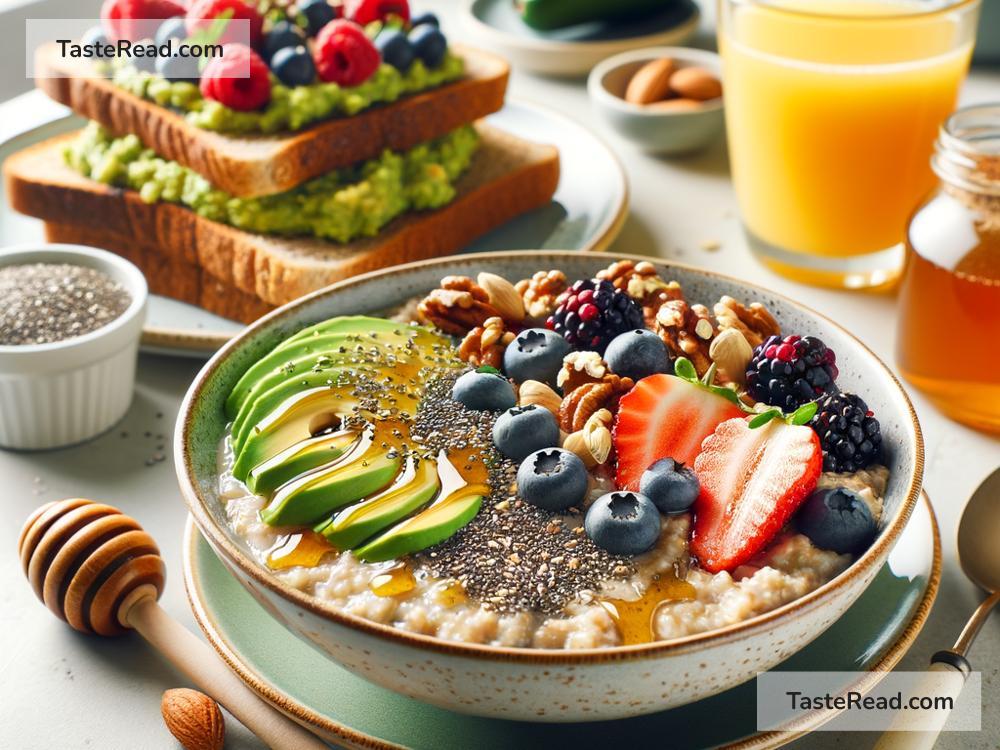The Benefits of Whole Grains for Heart Health
If you’re looking for a simple way to improve your health, you might try eating more whole grains. Whole grains are a type of food that can help keep your heart healthy. They’ve been around for thousands of years, and people around the world eat them in foods like bread, rice, and oats. Modern science backs up what many cultures have known for centuries: whole grains are good for your body, especially your heart.
But what exactly are whole grains, and how do they help your heart? In this article, we’ll explore the benefits of whole grains for heart health, explain why they’re good for you, and share some easy ways to add them to your diet.
What Are Whole Grains?
Whole grains are foods that include all parts of the grain: the bran, germ, and endosperm. Think of a grain like a seed that contains everything it needs to grow into a plant. Some common examples of whole grains include:
- Brown rice
- Oats
- Quinoa
- Whole wheat
- Barley
- Buckwheat
- Corn (like popcorn)
When grains are processed to make foods like white bread or white rice, some parts of the grain are removed—usually the bran and germ. While this makes the food softer and easier to cook, it also takes away many of the nutrients and fiber that make grains so good for you.
Whole grains keep all those healthy parts intact, which is why they’re better for your body.
Why Are Whole Grains Good for Heart Health?
Whole grains have a lot of nutrients that directly support heart health. Here’s how they work:
1. Rich in Fiber
Fiber is one of the most important nutrients for heart health, and whole grains are packed with it. Fiber helps reduce levels of LDL cholesterol, the “bad” cholesterol that can build up in your arteries and increase your risk of heart disease. It also helps keep your blood sugar steady, which is important for preventing diabetes—a condition that can harm the heart.
Fiber also helps you feel full after eating, which can keep you from overeating or snacking on unhealthy foods. Maintaining a healthy weight is another good way to protect your heart.
2. Full of Antioxidants
Whole grains contain antioxidants, which help fight inflammation in the body. Inflammation is a major contributor to heart disease because it can damage blood vessels over time. The antioxidants in whole grains, like those found in the bran layer, can help keep your blood vessels healthy.
3. Support Healthy Blood Pressure
Some whole grains, like oats and barley, contain special nutrients called beta-glucans. These nutrients can help lower blood pressure, one of the biggest risk factors for heart problems. High blood pressure puts extra strain on your heart and arteries, but eating whole grains can help keep it in check.
4. Help Prevent Plaque Build-Up
When you eat refined grains like white bread or sugary cereals, your blood sugar can spike. This can lead to the formation of plaque in your arteries, which can eventually cause a blockage and lead to heart attacks or strokes. Whole grains are digested more slowly, which means they won’t cause sudden spikes in blood sugar. This can help keep your arteries clear and healthy.
5. Reduce Risk of Heart Disease
Studies have shown that eating whole grains regularly can lower your risk of developing heart disease by up to 20%. This is because whole grains help control cholesterol, blood pressure, and inflammation—all of which are critical for heart health.
Easy Ways to Add Whole Grains to Your Diet
Adding more whole grains to your meals doesn’t have to be hard. Here are some easy tips to get started:
1. Swap Refined Grains for Whole Grains
Next time you’re shopping, choose whole-grain bread instead of white bread or brown rice instead of white rice. Many stores sell whole-grain versions of pasta, tortillas, and even crackers.
2. Start Your Day with Whole Grains
Breakfast is the perfect time to enjoy whole grains. Try oatmeal with fruit, whole-grain toast, or a bowl of whole-grain cereal. Quinoa or farro also make filling breakfast options.
3. Snack Smarter
Popcorn is a whole grain! Just skip the butter and salt and opt for air-popped popcorn or flavors like garlic powder or cumin. Another option is whole-grain crackers paired with hummus or cheese.
4. Experiment with Recipes
Cooking with whole grains can be fun. Try quinoa or bulgur in salads, or swap white flour with whole-grain flour in baking. Whole-grain couscous or barley can make hearty soups or stews even healthier.
5. Learn to Read Labels
When buying packaged foods, look for the words “100% whole grain” or “whole wheat” on the label. Be careful of misleading terms like “multi-grain” or “made with whole grains,” which don’t always mean the product is truly whole grain.
Conclusion
Whole grains are a simple, delicious way to protect your heart and improve your overall health. Their fiber, antioxidants, and nutrients work together to lower cholesterol, reduce inflammation, and keep your blood pressure stable. Plus, they’re easy to find and incorporate into your meals.
So, next time you’re planning a meal or snack, consider adding whole grains to your plate. Whether it’s a bowl of oatmeal for breakfast, brown rice at dinner, or popcorn as a snack, every bite is a step toward a healthier heart.
Remember, small changes can lead to big results! Eating whole grains regularly might even help you live a longer, healthier life. So grab a bag of oats or whole-grain bread and start enjoying the benefits today.


